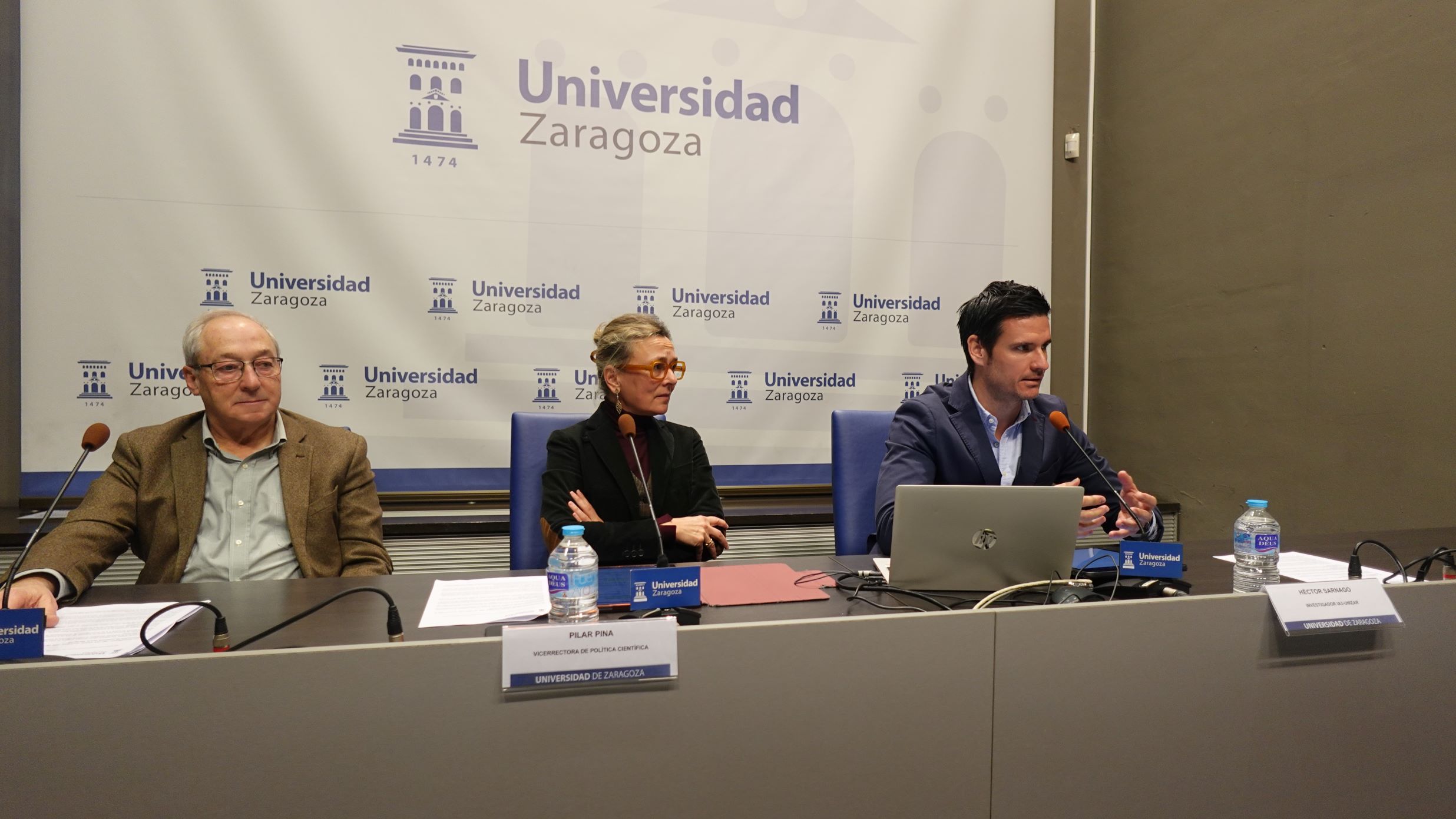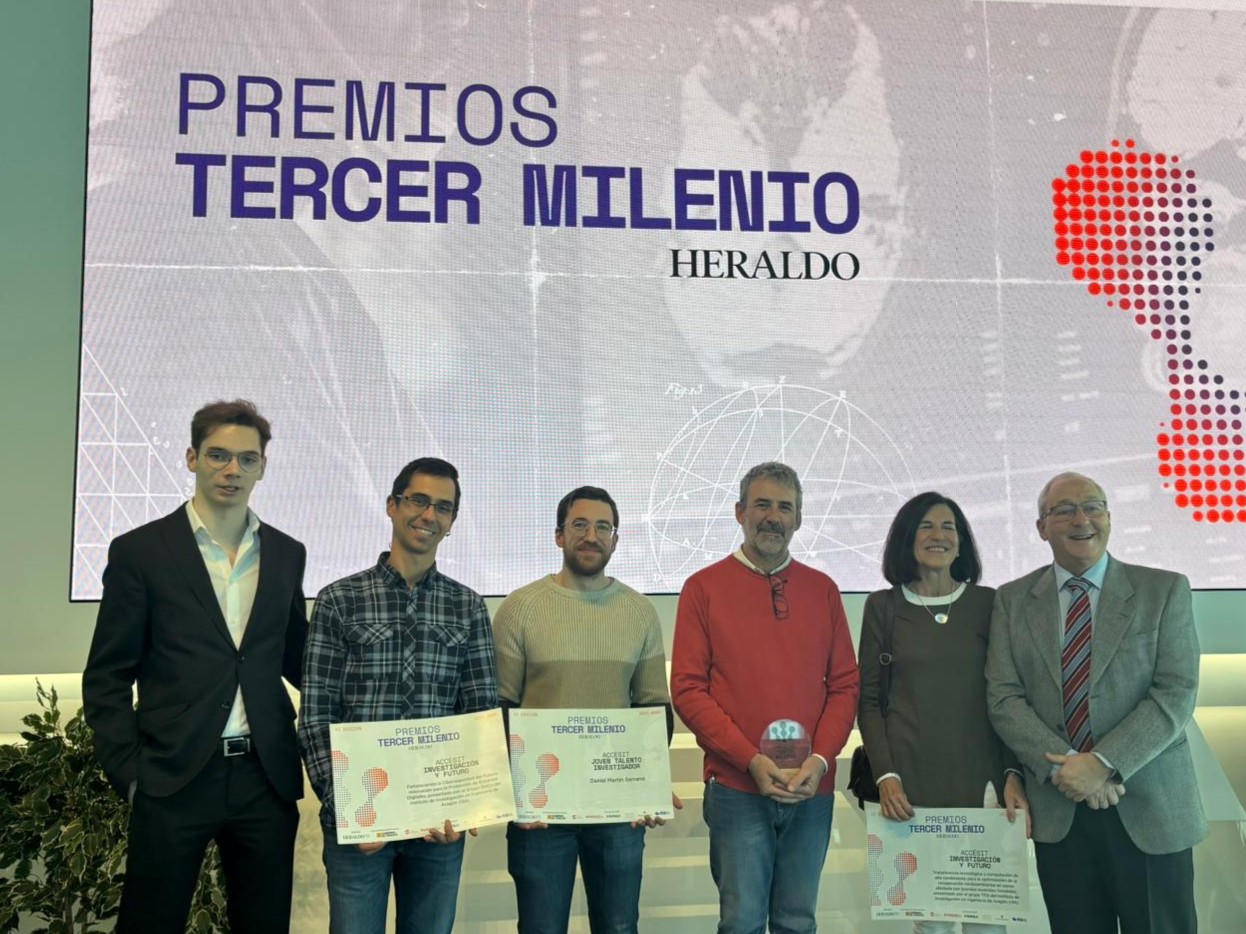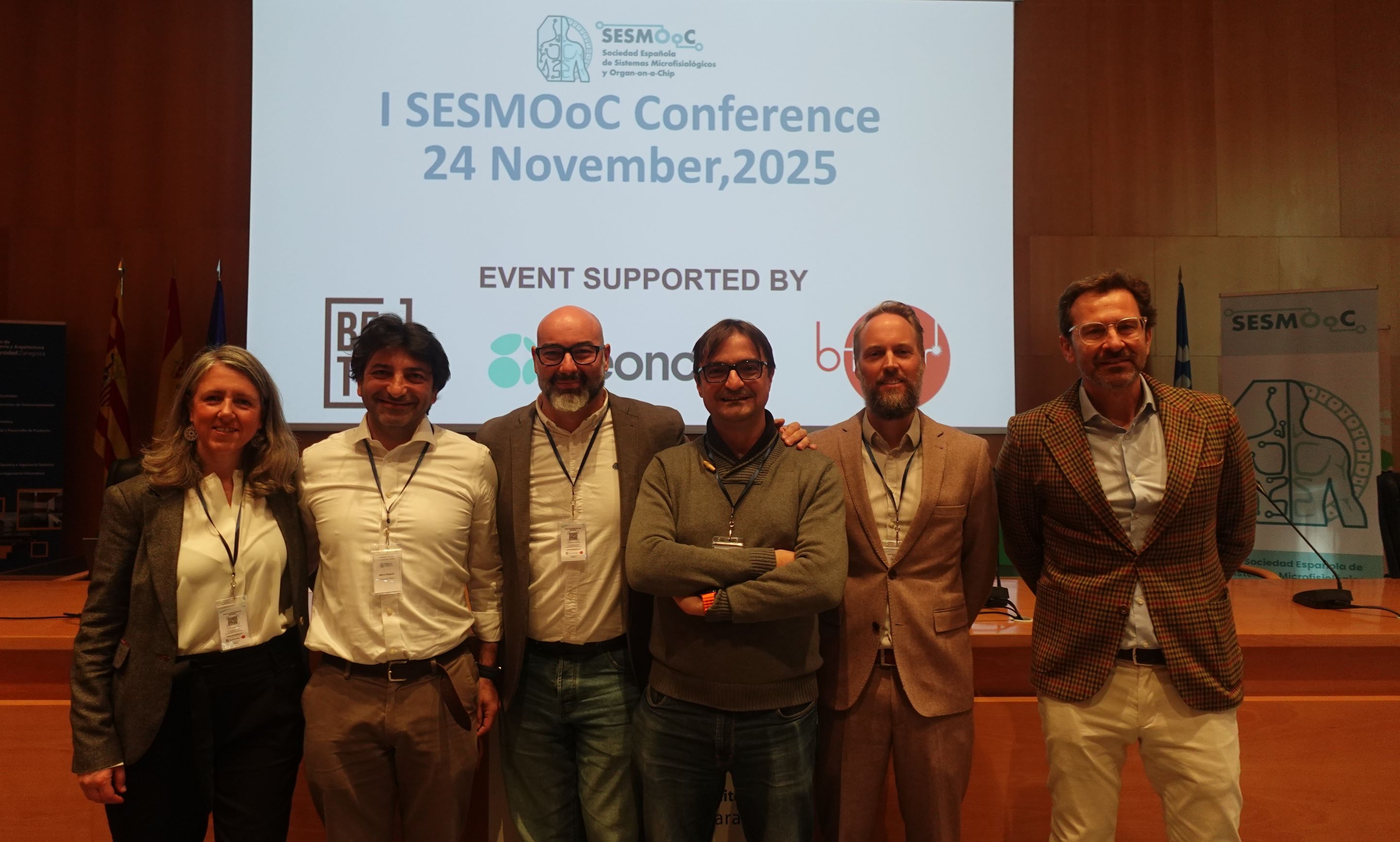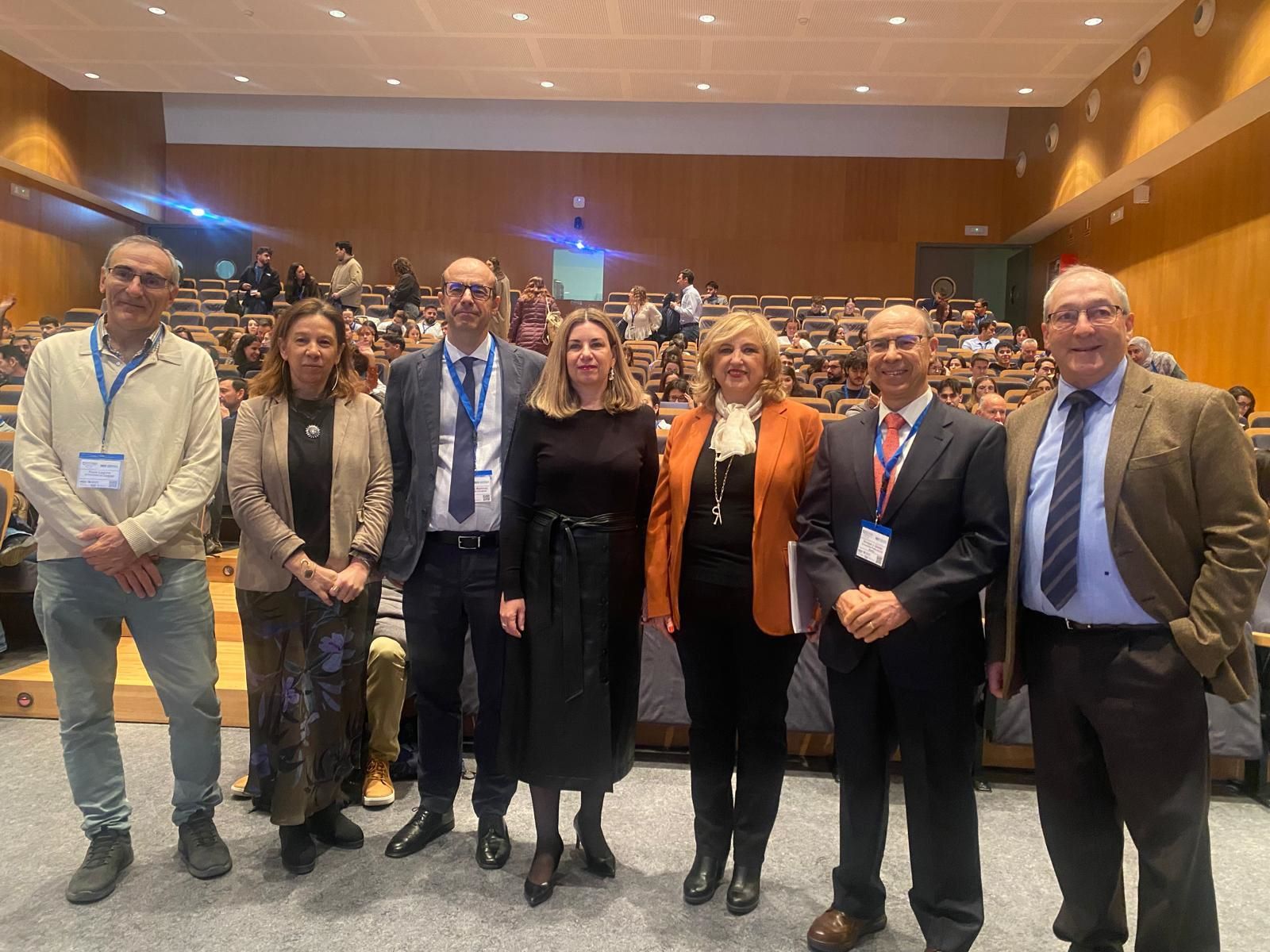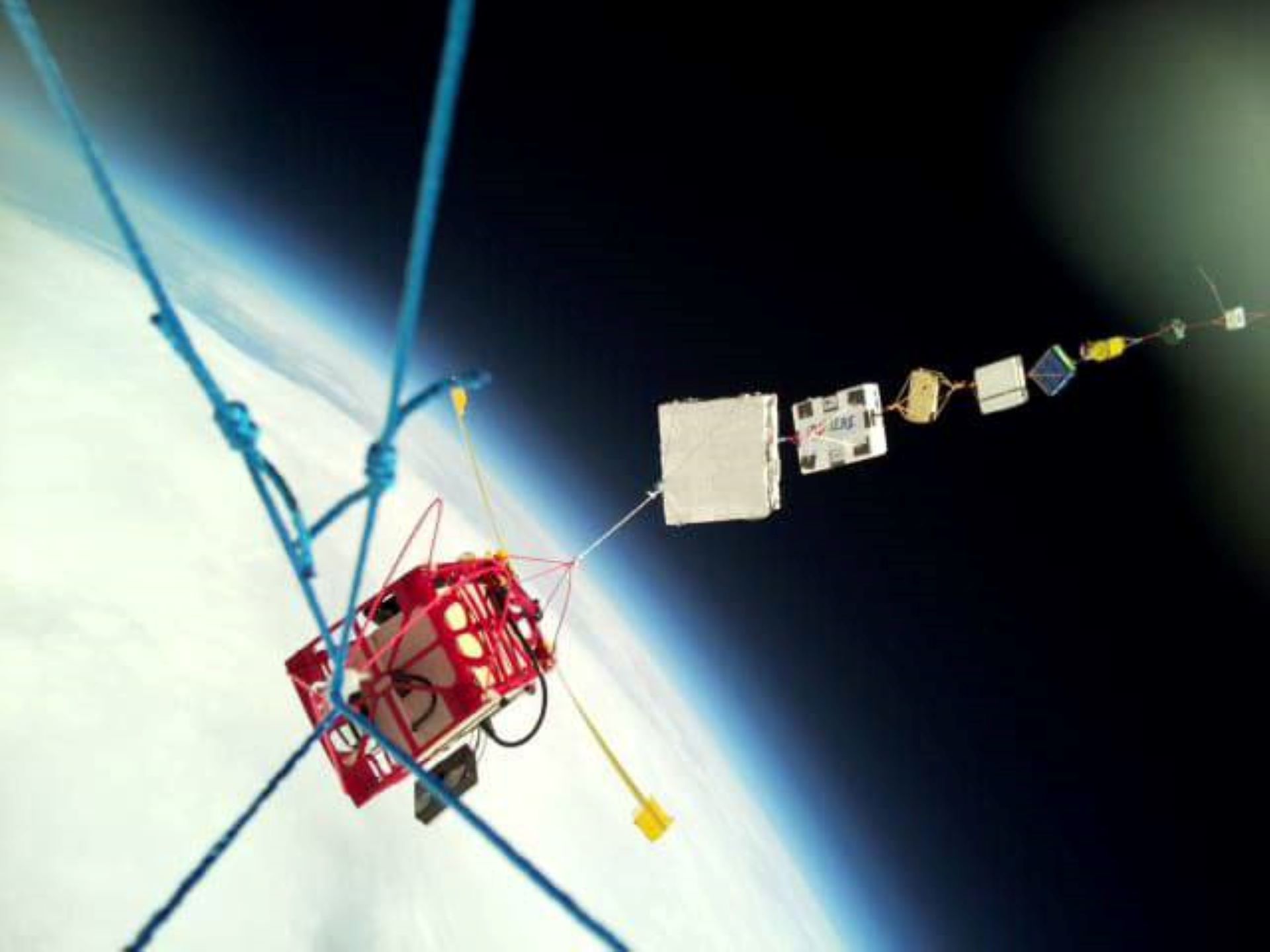
The Servet citizen science project launched this Saturday two helium balloons with 15 experiments carried out by students from the town of Calamocha in Teruel. The event brought together more than 200 participants and members of the public from the area.
Both launches were a success in spite of the strong wind that made the launching moment difficult and generated some tense moments. The first balloon took off from Calamocha after 11:00 in the morning and the second one 10 minutes later. The balloons exploded south of Fuentes de Ebro at an altitude of just over 32,000 metres and landed in the Sierra de Alcubierre, which complicated the search for the capsules. The balloons flew over the Aragonese sky for about an hour and a half.
A team from the organisation went to the landing point and retrieved all the capsules that were handed over to each of the teams, beginning the process of analysing the data obtained.
The Calamocha Exhibition Centre was the place chosen to inflate the balloons, join the capsules and explain the experiments to the media and curious onlookers, who were able to get a closer look at what citizen science is all about.
Sixteen schools from seven autonomous communities (Andalusia, Aragon, Asturias, the Canary Islands, Castile and Leon, Catalonia and La Rioja) participated in this edition of Servet.
Servet reached its tenth edition with this Saturday's launches and is a project that is carried out with the collaboration of the Spanish Foundation for Science and Technology - Ministry of Science, Innovation and Universities.
Retrieve capsules to analyse the data
On Saturday afternoon, the students received their capsules at Etopia (Zaragoza) and began to analyse the data collected by sensors, cameras and other objects included in the capsules, such as seeds or a tangerine segment.
The experiments are very varied, e.g. detecting water resources in the area of firefighting launches, testing the efficacy of medicines outside the Earth or painting a picture in the stratosphere. The students also asked questions such as: Why is the sky blue? or Can a biodegradable material such as mycelium withstand the conditions in the stratosphere?
Servet is a citizen science project that started in 2017 to democratise access to space involving a whole community of enthusiasts of astronautics, space travel and anything that moves more than 12,000 metres above sea level. It is a project of the University of Zaragoza through the Engineering Research Institute of Aragon (I3A) and the Ibercivis Foundation. It also has the support of Etopia, Centro de Arte y Tecnología, the CESAR Laboratories in Etopia and the Unión de Radioaficionados Españoles. The organisers would like to thank the collaboration of the Calamocha Town Council, the Government of Aragon and the Calamocha Trade Fair Institution for providing the space and the dissemination of the event.
Photo: image taken by the IES Granadilla de Abona school capsule. (Santa Cruz de Tenerife)
For more information you can consult the official Servetus Project website: https://servet.ibercivis.es
